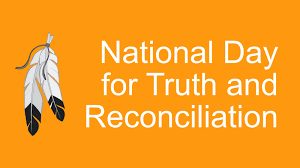The pace of life right now seems rather relentless. But with recent rainy weather, heading into (perhaps) a few weeks of shoulder-season and the federal election finally behind us, we can catch our breath.
For most of us, that means taking a moment to consider what is going on around us and taking stock.
With that in mind, here a few things that have caught my attention as I pause and contemplate what’s going on in our community.
On the weekend I took some time to again examine and learn more about the history and experience of First Nations peoples as we honour those who have been affected by the intergenerational genocide perpetrated by our nation, and us, through the Indian Act and the residential school system. Today, Sept. 30, is Canada’s first National Day for Truth and Reconciliation.
The federal government declared in June that this date would be a public holiday for all federally regulated public and private employees.
I was struck by the realization that I think of this as genocide—a deliberate and systematic destruction of a group of people because of their ethnicity, nationality, religion, or race. And this is not a historical event—it is ongoing.
The Resort Municipality of Whistler (RMOW) is closing its offices and operations for the day, has lowered official flags to half mast, is asking for a moment of silence from the community at noon today and will be illuminating the Fitzsimmons Bridge in orange.
Other organizations are also involved in marking the day, including the library, the Squamish Lil’wat Cultural Centre and the Whistler Chamber of Commerce.
Like so many issues in our community, it is not enough to register this event and carry on. If we want real change to happen all of us need to educate ourselves about the issue and be involved in raising awareness amongst those around us and in the community.
This is true of issues from the local level, to provincial, national and global (certainly true for the climate emergency).
While the issue of our treatment of First Nations is one of the most important before us, let’s consider a recent local issue that has also caught our attention—the noise bylaw the RMOW is considering.
Last July, the RMOW gave first three readings to an updated noise bylaw, which led to a discussion about stiffer fines for infractions. Should the $250 penalty for noise infractions stemming from house parties or outside of designated quiet hours (10 p.m. to 8 a.m.) be increased to, say, $500, as it stands for the construction industry.
This made me ponder the current noise bylaws, as in the last several months we have certainly had a few loud all-night house parties in my neighbourhood, and, to be honest, I am sick of construction noise on weekends.
This was particularly annoying on Sunday mornings when all one wanted to do was sit quietly on the deck, sip a cup of tea and read—but instead a neighbour decided 8 a.m. was the perfect time to use a jackhammer to break up concrete in their house renovation (and, yes, I went over and mentioned this point of view and the construction worker kindly put off the work until 10 a.m… sigh).
On Sept. 7 the Sea to Sky branch of the Canadian Home Builders Association asked that council consider letting construction crews start even earlier than the set time of 8 a.m. Council is considering it.
For that, I applaud them—the community needs time to consider this. We understand, for example, that wildfire risk has made daytime work challenging during our short construction season. But do we want construction to start at 7 a.m.? Indeed I would encourage council to consider changing the bylaw so residents can have at least one weekend day free of construction noise.
In the last few weeks there has also been a robust discussion of council’s decision to lower the neighbourhood speed limit to 30 kilometres per hour. Many are opposed.
Well, where have you been for the last several years when this has been brought up before our local government for discussion? The issue literally goes back to at least 2014 when it was brought up about the highway speed limit in Emerald. The highway is, obviously, a provincial responsibility, but it started the conversation.
In pilot projects run in 2019 and 2021, the speed limit was lowered in Function Junction for pedestrian safety. In August 2019, council received 82 pieces of correspondence urging it to reduce the speed limit on Nicklaus North Boulevard from 50 to 30 km/h.
It makes sense. Research shows the probability of pedestrian survival is about 90 per cent if struck by a vehicle at that speed, but reduced to 20 per cent if struck by a vehicle travelling at 50 km/h.
This August, council passed first three readings of a bylaw amendment to lower speed limits in neighbourhoods to 30 km/hr.
But here is the issue—people are behaving as if they had no say, and as if they are surprised. The RMOW has been looking at this and reporting on this for years, as has Pique.
Pay attention, educate yourselves, and get involved!






